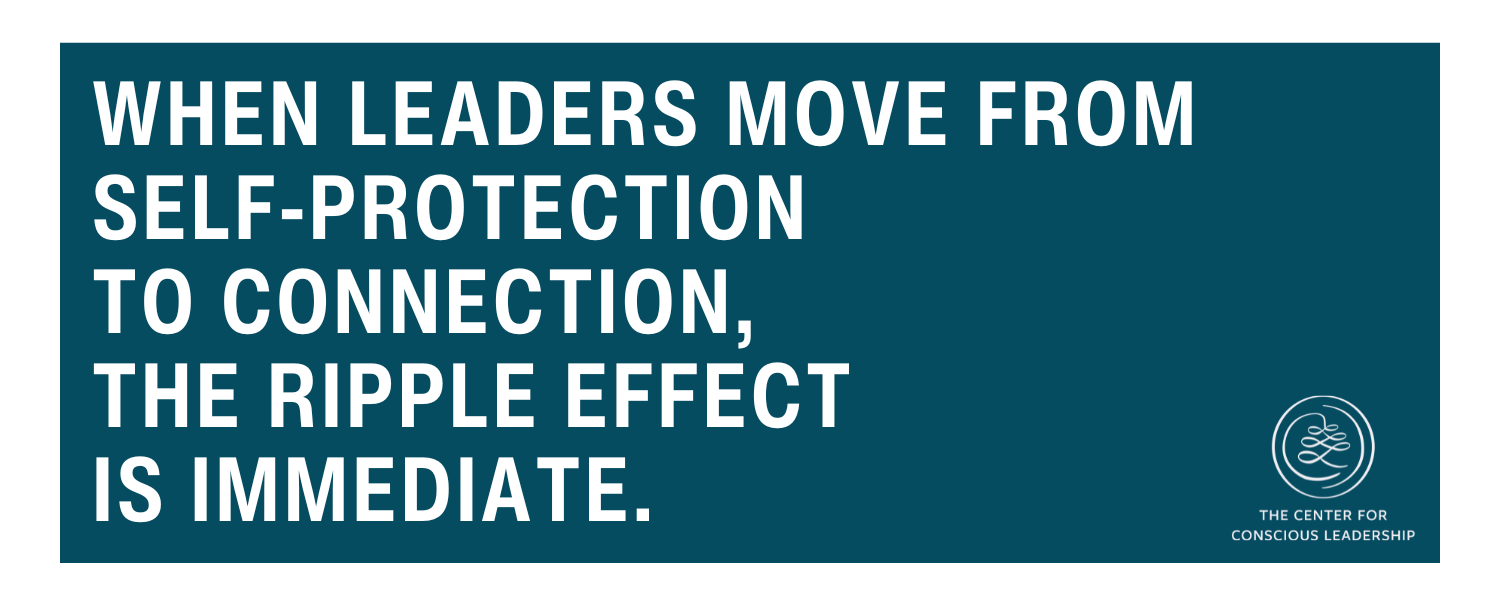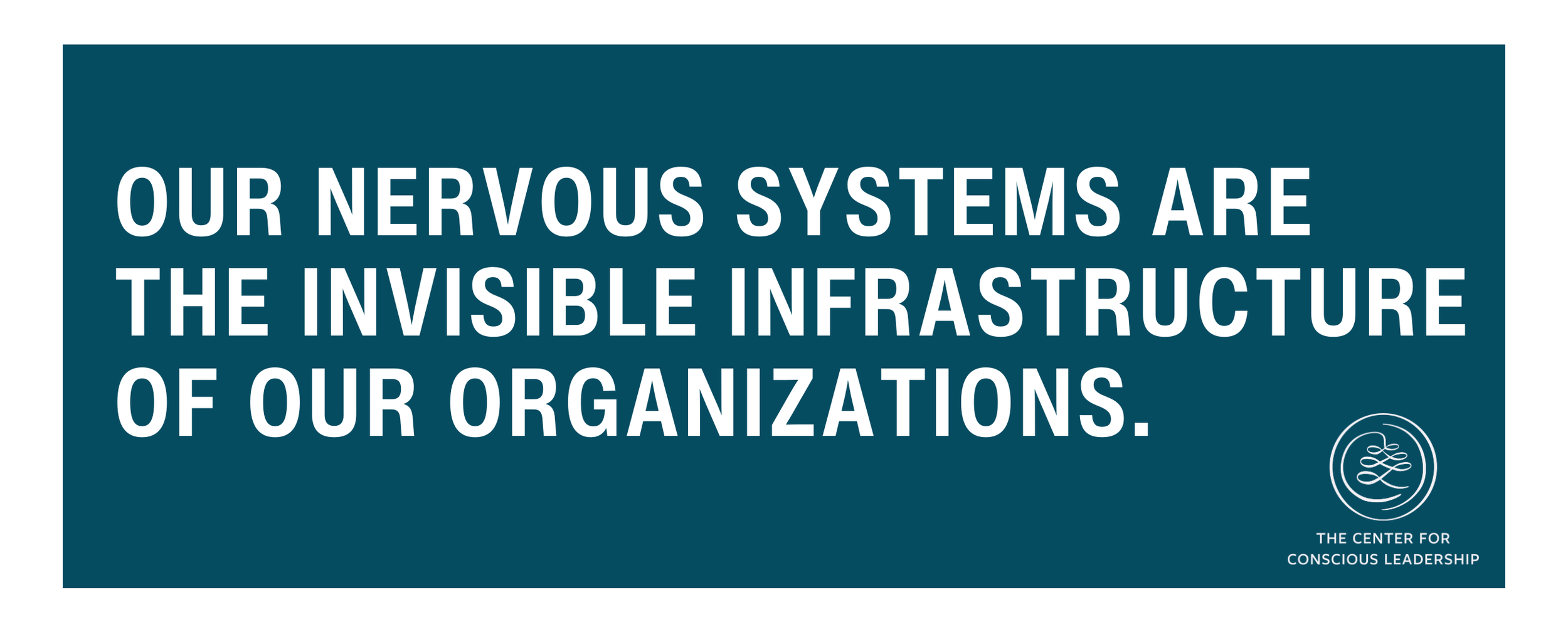Protection Patterns: Why Your Best Leaders Protect Instead of Connect
The Moment the Room Tightens
James feels the shift in the room before he understands why he feels what he feels.
A question lands sharper than expected in the board meeting. His chest tightens, his breath quickens, and suddenly he’s losing his grip, speaking faster and explaining more before anyone can question the data and therefore him.
Across town, Maya feels it too.
An email from her skip-level pings at 5:48 a.m.: “Can we touch base?” Her stomach drops. She freezes, scanning her memory for every potential issue, then spends the rest of the day walking on eggshells—pleasant, if a bit distant, absolutely preoccupied by a disciplinary conversation she is certain is coming.
These are different behaviors with the same root cause.
Leaders like James and Maya don’t need another course on communication skills or “executive presence.” They need a new understanding of what’s driving their behavior under pressure. There’s no issue with their aptitude or their attitude. It comes down to biology, and the manifold ways our nervous systems try to keep us safe when they register a potential threat.
Unless we learn to recognize these patterns for what they are–self-protection and not a core part of our personality–they will continue to secretly run the show.
When Self-Protection Becomes the Operating System
Leaders don’t wake up in the morning planning to micromanage or people-please.
When stress hits, even the most self-aware leaders can slip into unconscious Protection Patterns—automatic nervous system responses that are triggered under the level of conscious awareness to prioritize safety over connection.
When we spiral over a harsh email response or over-explain when someone questions our decisions, we are using Protection Patterns. These Protection Patterns aren’t character flaws. They are intelligent adaptations our nervous systems developed over millennia to survive threats to belonging and resources.
Unfortunately, Protection Patterns do not serve us well in leadership. These same survival patterns that may have kept us safe in childhood, in school, or in our early career—earning approval from authority figures, avoiding punishment, keeping the peace—can quietly erode the trust, connection, and impact we’ve worked so hard to cultivate.
Left unchecked, self-protection means we stop leading from our values and start leading from fear. Once we can acknowledge our Protection Patterns, however, we can change them.
The Protection Patterns Map: Five Patterns that Sabotage Connection
The Protection Patterns Map is one of the core tools in our Trauma-Informed Leadership System. It offers a simple, memorable way to recognize your default protective responses under stress—without judgment or blame.
Here are the five core Protection Patterns we see most often in leaders, along with what shifts when you recognize them:
1. Over-functioning: “If you want it done right, you have to do it yourself.”
Looks like: Fixing, controlling, and taking over.
Rooted in: The fear of failure or chaos.
The unspoken belief: “I can’t trust anyone. I have to do it all.”
What becomes possible: You start delegating—not out of necessity, but trust. Your energy goes where it belongs: strategy, support, and the work only you can do. You stop exhausting yourself trying to control everything.
2. Under-functioning: “If I don’t try, I can’t fail.”
Looks like: Shutting down, withdrawing, and going silent.
Rooted in: The fear of inadequacy or overwhelm.
The unspoken belief: “If no one notices me, I can’t be a target.”
What becomes possible: You speak up before the pressure becomes unbearable. You offer your perspective and advocate for what you need. You contribute more fully, and discover your voice matters more than you know.
3. Appeasing: “If they’re okay, I’m okay.”
Looks like: People-pleasing, fawning, and over-agreeing.
Rooted in: The fear of rejection or loss of belonging.
The unspoken belief: “My safety depends on others liking me.”
What becomes possible: You say "no" with clarity and care. You make choices that honor your needs and strengths. You show up as your fullest self, and discover that belonging didn’t actually exist for you when you were endlessly agreeable.
4. Avoiding: “If I wait long enough, it might go away.”
Looks like: Procrastinating, offering vague opinions, and bypassing tension.
Rooted in: The fear of conflict or exposure.
The unspoken belief: “My emotions are not safe to feel.”
What becomes possible: You name tension directly, without shame. You engage in the healthy conflict that builds trust. You say what needs to be said, and realize that discomfort didn’t distroy you. Honesty strengthened your best relationships.
5. Defending: “If they could just understand...”
Looks like: Justifying, deflecting, blaming, and intellectualizing.
Rooted in: The fear of being wrong or humiliated.
The unspoken belief: “I’m only safe if I can prove I’m right.”
What becomes possible: You listen for truth in feedback instead of scanning for threat. You get curious instead of correct. You discover that being wrong didn’t diminish you—it opened you to more growth, collaboration, and trust.
These patterns aren't character flaws—they're intelligent adaptations your nervous system developed to keep you safe. They're transient states, not permanent traits. When you can recognize them, you can interrupt them and choose differently.
The key is awareness. If you can identify the pattern, you can disrupt it.
These shifts sound simple, but they rewire entire cultures over time. When leaders move from self-protection to connection, the ripple effect is immediate. Teams feel safer, communicate more honestly, and get the support they need to do their best work. Systems work begins with ourselves. When we change our patterns, we change what becomes possible—for us and for everyone around us.
Leading from Connection: Why This Changes Everything
When leaders stop operating from Protection Patterns and start leading from regulated presence, something fundamental shifts. It's not just about feeling better or managing stress more effectively. It's about changing the invisible infrastructure that governs how power, safety, and trust operate in your organization.
Leaders who learn to recognize and regulate their Protection Patterns report some powerful shifts:
They recover faster after conflict or feedback.
They speak more clearly and kindly, even in hard moments.
They stop unintentionally breaking trust through reactivity.
Their teams describe them as calm, responsive, and real.
In short: they become safer leaders.
Safer leaders develop more sustainable, supportive cultures, and by extension, healthier organizations. What we change in our smaller ecosystems echoes into larger ones, even if we cannot see the immediate result. Safe, conscious leaders are the difference between an organization that devours itself and one that sustains itself.
Healing As the New Metric of Leadership
Our nervous systems are the invisible infrastructure of our organizations. When they run on fear, control, or overdrive, no amount of strategy will save us. But when conscious leaders can see and shift their Protection Patterns, they can create something rarer and more valuable: trust, resilience, and the capacity to sustain transformation over time.
That’s what trauma-informed leadership really means—repatterning the way power and safety coexist.
If you’re ready to explore how the Protection Patterns Map can help your leaders build capacity, safety, and connection under pressure, let’s talk. Book a discovery call to bring the Trauma-Informed Leadership System to your organization.
The world we’re building requires leaders who are conscious, connected, and trauma-informed.
At The Center for Conscious Leadership, we help executives and organizations evolve—integrating neuroscience, trauma-informed leadership, and systems thinking to create cultures that heal and perform.
If you’re ready to build the future with us, explore our Trauma-Informed Leadership Program or connect to learn more about our coaching and systemic work.






